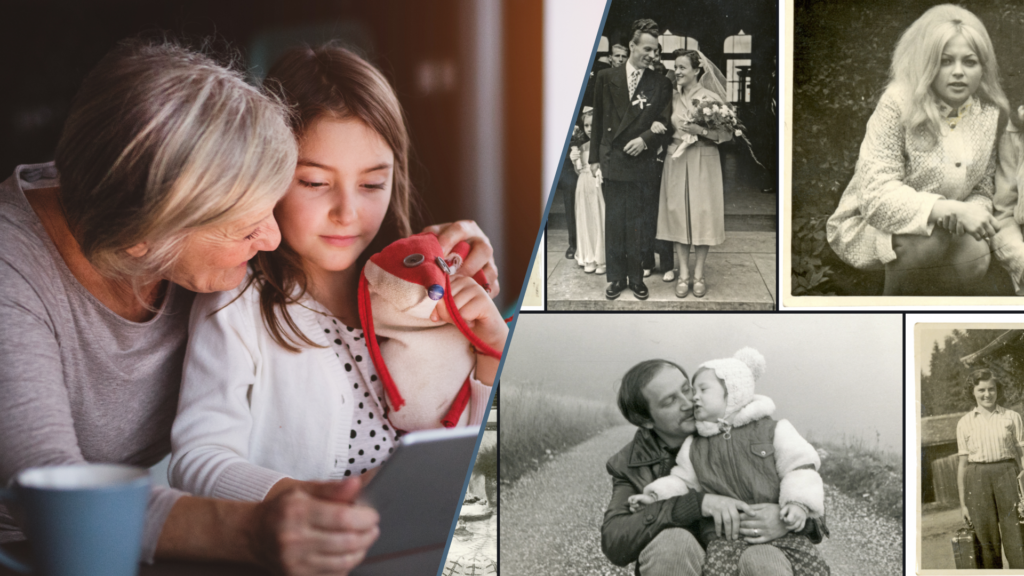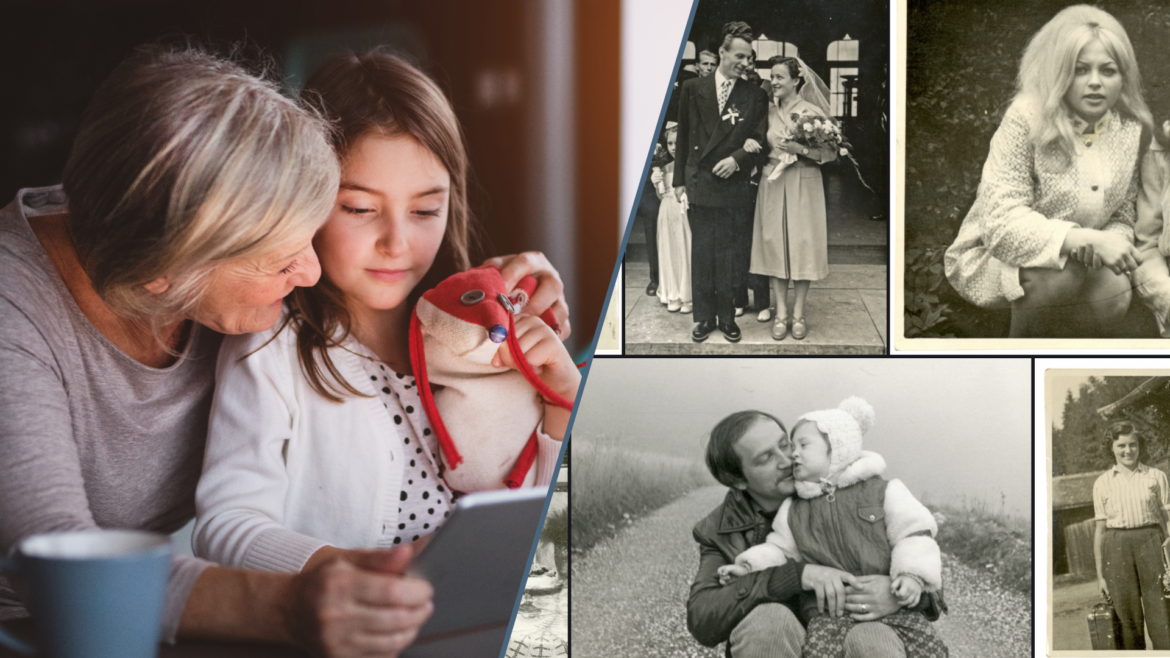In four generations, you might be forgotten.
That isn’t a pessimistic guess; it’s a reality many families experience. Stories, traditions, and even names fade away as time moves forward.
While we live in an era where documenting moments has never been easier, we’ve unintentionally created a paradox: the more content we make, the harder it becomes to preserve what matters.
This isn’t just a matter of nostalgia. Family history grounds us. Research indicates that children familiar with their family’s history tend to exhibit higher self-esteem and greater resilience.
Families that shared coherent narratives also saw their children develop better self-esteem and social competence and experience less anxiety and stress. But how do we pass that knowledge on in a way that survives the tidal wave of digital clutter we’ve created?
The Hidden Cost of Too Much Content
On an old hard drive, there’s a folder you last opened years ago. Inside, you might find the photos from your child’s first birthday, a blurry snapshot of your grandparents dancing at a wedding, or the scanned letters your mother kept in a shoebox.
If those memories were lost tomorrow, would anyone even know they existed?
Families today aren’t failing to document their lives. We have thousands of photos, videos, and audio recordings spread across phones, laptops, and clouds. Yet this abundance has created a profound problem: the more we save, the more we bury.
When content is scattered and disorganized, it becomes inaccessible. Worse, the context—the stories and emotions that turn a photograph into a cherished memory—is rarely preserved. For example, a photo of a wedding dress loses its meaning if no one remembers the bride’s name.
The Challenge of Connection
The problem is more than just storage; it’s disconnection. Family members contribute their photos, videos, and memories but rarely collaborate to preserve a shared history. As a result, our archives are fragmented across devices and generations, each piece isolated from the larger story.
This disconnection grows with every passing year. If your family doesn’t actively document and organize its history, future generations may have nothing meaningful to inherit. The stories your grandparents told you, the faces in the photo albums, even the everyday moments that capture your life today—all of it could be lost.
Building a Family Archive That Lasts
There’s a growing recognition that families need more than just tools to store files; they need a shared system that makes memories accessible, organized, and collaborative.
Mylio Family is one approach to solving this.
The idea is simple: a shared library where all family members can contribute to and access the family’s history. Mylio allows you to combine photos, videos, documents, and scanned memorabilia in one place. But what makes it unique is its focus on connection.
Families can view and curate their shared library together, ensuring that the essential stories and faces don’t fade into obscurity. For example, imagine you’re scanning old family photo albums from your parents’ attic.
With Mylio, you can bring those photos in a beautiful LifeCalendar, add context—names, dates, and stories—and share them in real-time with your siblings, children, and cousins. Your brother might add his wedding photos, your niece could upload her graduation pictures, and your parents might include scanned letters or documents.
The result is a living, breathing family archive that spans generations. It’s not just about preservation—it’s about present-day connections.

How Families Use Mylio
Families use Mylio in different ways that are tailored to their needs. Some use it to create a chronological timeline of family events, while others use it to preserve the legacy of a family member who has passed away.
One family used Mylio to digitize decades of home videos and photos, bringing together a scattered archive that had previously lived on VHS tapes, DVDs, and dusty hard drives. Another used it to document their genealogy research, linking old photographs with newly uncovered family records. In both cases, the shared library became more than just a collection of files—it became a tool for connection.
Mylio Family Plan allows up to 10 people to collaborate. Everyone has access to the same library and can contribute their photos or memories, ensuring that family history isn’t just preserved but enriched by multiple perspectives.
A Call to Action for Families
We’re at a unique moment in history. We have the tools to preserve our family legacies in ways previous generations could only dream of. But with those tools comes responsibility.
If you do not take steps now to organize your family’s stories, they may remain in the growing void of digital noise.
Your great-grandchildren may know nothing of the lives you led, the struggles you faced, or the love you shared. The opportunity is here, but it’s fleeting. Family connections and histories aren’t eternal—they require care, attention, and action.

